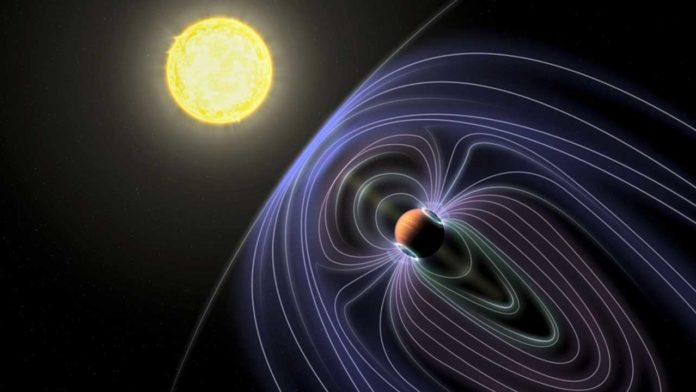An international team of scientists has detected radio bursts emanating from the constellation Boötes. According to scientists, this could be the first radio emission collected from a planet beyond our solar system.
Tau Boötis is a binary star system, with the secondary star being a red dwarf. It is an F-type main-sequence star approximately 51 light-years away in the constellation of Boötes.
Cornell postdoctoral researcher Jake D. Turner said, “We present one of the first hints of detecting an exoplanet in the radio realm. The signal is from the Tau Boötes system, which contains a binary star and an exoplanet. We make a case for emission by the planet itself. From the strength and polarization of the radio signal and the planet’s magnetic field, it is compatible with theoretical predictions.”
Ray Jayawardhana, the Harold Tanner Dean of the College of Arts and Sciences, and a professor of astronomy said, “If confirmed through follow-up observations, this radio detection opens up a new window on exoplanets, giving us a novel way to examine alien worlds that are tens of light-years away.”
The discovery was made using the Low-Frequency Array (LOFAR), a radio telescope in the Netherlands. Observations from the LOFAR uncovered emission bursts from a star-system hosting a so-called hot Jupiter, a gaseous giant planet that is very close to its sun.
Scientists also observed other potential exoplanetary radio-emission candidates in the 55 Cancri and Upsilon Andromedae systems. Only the Tau Boötes exoplanet system exhibited a significant radio signature, a unique possible window on the planet’s magnetic field.
Turner said, “Observing an exoplanet’s magnetic field helps astronomers decipher a planet’s interior and atmospheric properties, as well as the physics of star-planet interactions.”
Earth’s magnetic field protects it from solar wind dangers, keeping the planet habitable. The magnetic field of Earth-like exoplanets may contribute to their possible habitability by shielding their atmospheres from solar wind and cosmic rays, and protecting the planet from atmospheric loss.
Scientists pored over nearly 100-hours of radio observations and discovered the expected hot Jupiter signature in Tau Boötes.
Turner said, “We learned from our own Jupiter what this kind of detection looks like. We went searching for it, and we found it.”
The signature, though, is weak. There remains some uncertainty that the detected radio signal is from the planet. The need for follow-up observations is critical.”
National Science Foundation-funded this study.
Journal Reference:
- J.D. Turner et al. The search for radio emission from the exoplanetary systems 55 Cancri, upsilon Andromedae, and tau Boötis using LOFAR beam-formed observations. DOI: 10.1051/0004-6361/201937201
